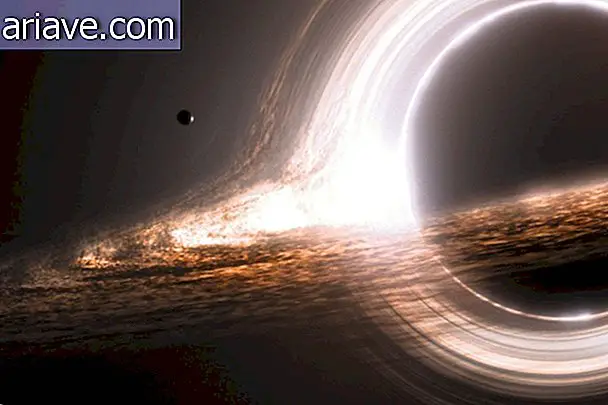From newspaper to streaming: How we follow the World Cup over the years
The 2018 World Cup is right there and we follow games and results in a variety of ways - through the newspaper, on the radio, watching on the TV or even on the PC.
But do you know how this has evolved to reach these days, going through all the tournaments and also the technological developments? This is the timeline of the Brasilera National Team results and innovations in transmission that you know now.
The beginning of everything
The first World Cup was peculiar. Only 13 participants and multiple invitations declined due to travel expenses. Oh, and the country was cracking in football for a fight between cariocas and paulistas, and the latter refused to accept the call. Uruguay defeated Argentina and won at home.

Brazil did not excel in the field, but already had press present. Printed newspapers were the only source, and they also reproduced the tense mood between states. Several vehicles stood out, including post-game interviews, and the state of Minas Gerais gave real-time information to the crowd using a megaphone. The newspapers received everything by telegram.
In 34, little news. The World Cup went to Europe, in an Italy already controlled by Mussolini. The selection of the house took the cup, but at least cariocas and paulistas made up.

Only from 38 is that the Brazilian can follow the World Cup radio. Leonardo Gagliano Neto was the radio broadcaster of the Radio Club of Brazil of Rio de Janeiro who broadcasted via AM. Brazil had its best performance so far, a third place, and Italy was two-time champion.
After the war
In 1950, the first World Cup after World War II, Brazil lost the final to Uruguay 2-1 at Maracanã. All the sadness of that match was accompanied especially by the radio, which was still in its golden age.
The 54th edition also passed without Brazilian audiences watching the Bernese Miracle on TV, which was the defeat of favorite Hungary against West Germany.
Brazilian television was only four years old and there were few channels on the air, with programs still with radio formulas. Only games from the same state as the station were broadcast.

The evolution for the first world won by Brazil, Sweden and against the owners of the house in 1958, was discreet. Brazilians even saw some goals and isolated passages. But this was very rarely on television, and it was more often followed in the news before the movies. The print and the radio continued to dominate.
The two-time championship
The 62nd Cup was the two-time Brazilian Championship and a novelty. Matches were broadcast for the first time from kick-off to final whistle by TV stations. The videotapes were only shown up to two days late, because it took time to get there from Chile. And Rádio Bandeirantes made a curious innovation. She placed a luminous panel with speakers in the Praça da Sé, in São Paulo, shaped like a field and covered by lamps, which lit according to the narration and positioning of the ball. This attracted crowds.

By 66, in England, the images also arrived a day late, and radio and newspapers were still on the rise. The elimination of Brazil in the first phase with a football considered ugly increased the number of critics in the press, as the future coach João Saldanha. It was the first World Cup that passed by satellite, but Brazil has not had this privilege yet.
On the tv screen
The 1970 World Cup in Mexico was historic on the field and on TV. In football, it was the three-time championship in Brazil, the first team to achieve this feat. In broadcasting, it was the first time the country saw a live and more or less color Cup! The vast majority of the population saw games in black and white, as Embratel was still testing the display, and few devices supported the new technology.

And then begins a controversy that lasts until today: the rights to pass the games. In 70, it was a bizarre decision: the broadcast pool made every bit of the game go through one station: Tupi, Globo and the Independent Broadcasters Network, the future Record. Only 11 games went live.
To not let anyone miss the national team show, manufacturers held exhibitions of matches in public squares.

Even in black and white, many people bought the first TV at the time, or switched to a more modern one. One of the highlights of the time was Colorado, a national brand with none other than Pelé as a poster boy.
Finally colorful!
The 1974 World Cup is the first with really widespread color TV, as Brazil has adopted PAL-M analog color coding. The original PAL, or Alternating Color Line standard, was created by Telefunken in 62. The former was the NTSC, which was already considered outdated. He did not read well different shades of the same color, and from time to time he displayed the so-called ghosts, those vibrations in the signal that doubled the image.

The first PAL-M color broadcast in Brazil was the grape party in the city of Caxias do Sul, on February 19, 1972. A month later, Rede Globo aired My First Ball, an episode of the Special Case show, first program recorded and produced in color. And then came slow motion technology, which gave more excitement and allowed for more accurate analysis.
In the 86 World Cup, Brazil is presented to a classic of sports broadcasts. It's the stubborn, that animation in which the station's team analyzes with controversial electronic features, such as impediments. The first were very simple drawings and without all those digital graphics, but they already took the viewers' doubts.

The tetra came in 94, in the United States Cup, with that classic end of the game of Galvão Bueno crazy shouting and covering the Pelé. But there were people who saw this final not by Globo or Band, which had the narration of Luciano do Valle, but for the first time on pay TV. That was the year when Sportv was born, which had existed 3 years before under the name Top Sport, and played the games in VT format. Luis Carlos Junior was already the main narrator.

Globo had a satellite and four exclusive broadcast cameras, and debuted a new feature, super slow motion. A touchscreen and commentary analysis pre-game and crowd movement have also become standard starting this year.
Gunter Schweitzer and HD
Already in 98, with that game against France that we prefer to forget, there was little news in the TV broadcast. At least options were not lacking: there were 7 stations with games playing, five of them open. And that was the first Internet World Cup in the country, when Gunter Schweitzer's classic whistle-blowing email started circulating.

The 2002 World Cup was marked by dawn games and also by a record audience of Globo in the match between Brazil and England, thanks to an exclusive right to broadcast. This was the first World Cup broadcast in high definition, but only for the privileged. And a lot of people still preferred the radio because the narration came fractions of a second earlier.
Yeah, a lot of people were surprised by a bad goal because of their neighbors. This was also the first with a screening of the final in movie theaters, but for now only for guests. In the 2006 World Cup in Germany, it was the first World Cup to start with HDTV in Brazil and technology becoming popular. The privileged already jumped for broadcast in Full HD.

In 2010, the World Cup was marked by a more intense use of social networks such as the so-called second screen, especially to criticize Brazil and coach Dunga on Twitter. The first broadcast of a 3D Cup game, a technology that did not hit the mark. This was the first also with transmission released on cell phones.
In 2014, here in Brazil, the 7 to 1 can be checked for the first time in 4K. But TVs with that resolution are still expensive today, so imagine four years ago.
And in Russia?
The 2018 World Cup could be the consolidation of 4K in Brazil. All games will be broadcast on Ultra HD, and the classic search for new TVs has been recorded in recent months. Also, it's not the debut, but at this World Cup we have more options to watch streaming games, including streaming apps that make full games available after the original time.

It is also the first with the preferably digital signal, with the analog being finished being turned off in national territory. Tests with 8K cameras will be done, but it is far from reality even in the rest of the world. What do you know about the 2022 World Cup, in Qatar, and maybe even with the hexa already guaranteed?
***
Do you know the Mega Curioso newsletter? Weekly, we produce exclusive content for lovers of the biggest curiosities and bizarres of this big world! Register your email and do not miss this way to keep in touch!
From newspaper to streaming: How we follow the World Cup over the years via TecMundo











